It’s always a big deal for me when I make it down to a new part of Japan for the first time. I still have quite a few regions on my bucket list (Hokkaido sticks out like a sore thumb) but Kyushuu was a pretty big omission. And it can be very cheap to fly there on one of Japan’s discount airlines – much cheaper than the Shinkansen, in fact, though hardly as pleasant. So I decided to head down there for a few days during my brief summer holidays. I flew into Fukuoka and back from Nagasaki, but given my time constraints was sadly only able to spend about 24 hours in the former.
This was an interesting trip for me in many ways, among them my first exposure to a capsule hotel (in Nagasaki). It was overall better than I expected, certainly a great value, and at this point in my life I would take it over a shared hostel dorm any day of the week. There’s a roulette factor with snorers of course (the second night was brutal), but on the whole there was a feeling of reasonable privacy and not overwhelmingly one of claustrophobia (though I’m not especially sensitive to that).
I saw enough of Hakata (Fukuoka) to know I need to go back for more. I’ve heard very good things about the city as one of Japan’s most liveable, and I can certainly see that. Like Kobe, it seems neither too big or too small. There’s an abundance of rivers with attractive walking paths, a bustling modern downtown and a thriving nightlife area. It’s also the birthplace of Hakata ramen, and after having eaten hundreds of bowls of it all over the world, I couldn’t not commemorate finally having one at the source of the spring. Hakata is also very close to Dazaifu, one of Japan’s most important historical cities – it was basically the governing capital of southern Japan for many years.
The bulk of my time was spent in Nagasaki and close by, and the city did not disappoint me. It’s a fascinating place if one is drawn by history – but so much of that history is tragic in nature. The atomic bomb is the most obvious element there, and the Nagasaki Peace Park and Atomic Bomb Museum are every bit as shattering as you would expect them to be. But there’s also the matter of Nagasaki’s complicated relationship with foreigners. It’s always been Japan’s most open city – even at the height of isolation first Portuguese, then Dutch were allowed here (in quarantined districts) and as a result it (like Kobe) feels very international. That applies to the food, like the weird “Turukku Rice” (supposedly Turkish but not hardly, a melange of Neapolitan spaghetti, tonkatsu and rice) and a twist on the American milkshake with sorbet and condensed milk (delicious). Nagasaki is perhaps most famous for its overtly Chinese-influenced Champon and Zaru Soba.
But there’s a dark side to all this, exemplified by the treatment of Christians after relations between the missionaries and the Shogunate went south. Christianity became quite popular in Nagasaki and the Japanese government saw it as a real threat, and cracked down hard. All this culminated in the crucifixion of 26 Christians (including women and boys) by the government in 1597. As with the atomic blast of 1945, echoes of this event can be found all across Nagasaki even today, and it seems very much etched into the city’s psyche.
Despite all that darkness, though, Nagasaki is a very upbeat and gregarious town. It reminds me of my beloved San Francisco in many ways – incredible (and incredibly hilly) natural setting, streetcars clanging away, Chinatown (and a huge Chinese population generally). It’s also absolutely overrun by cats, who adore its uneven terrain for all the safe retreats it provides them. Most of these cats are feral in the sense of not having owners, but they seem to have little fear of humans for the most part and many are outright friendly. Probably the highlight of Nagasaki in terms of attractions was Glover Garden, the collection of Western houses overlooking the bay. I went for a night visit (only possible in summer) and followed that by a climb to the top of nearby Nabekanmuriyama Park for its incredible night view.
On this trip I also took the bus up to Unzen Onsen, a little town on the slopes of the very seismically active Mt. Unzen. A lovely place, but most strikingly absolutely awash in myriad species of beautiful tombo (dragonfly) – one of the hallmarks of summer in Japan. As well I headed out to the famous “Battleship Island”, Gunkanjima – the former Mitsubishi undersea coal mine which housed as many as 5000 people in its limited space before shuttering in 1974. It’s been rediscovered as a tourist attraction – a new dock built and a few viewing platforms added. The forlorn, twisted skeletons of its massive buildings make an unforgettable sight (though it would be all the more so if not surrounded by tourists).


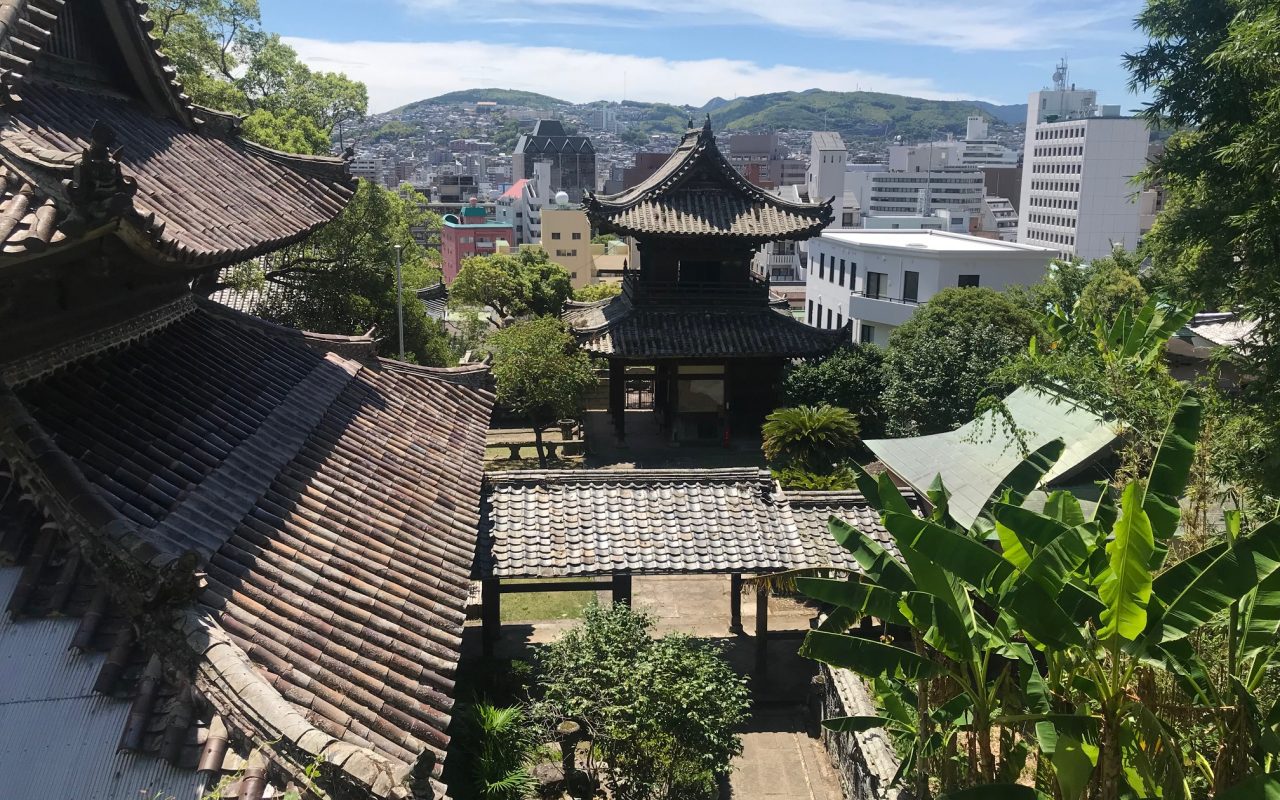

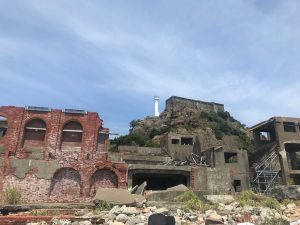
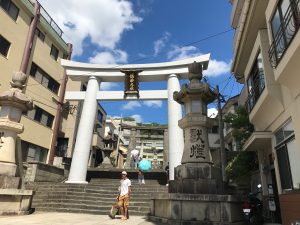


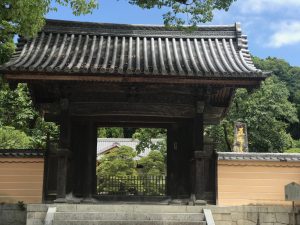
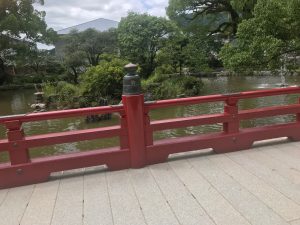
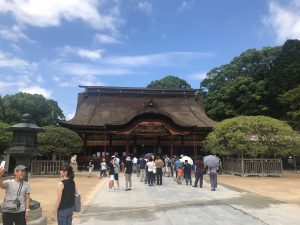
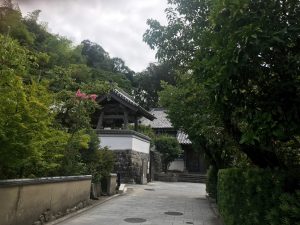
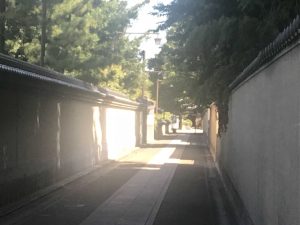

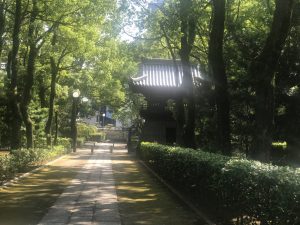
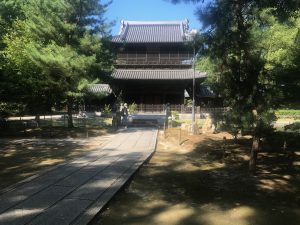

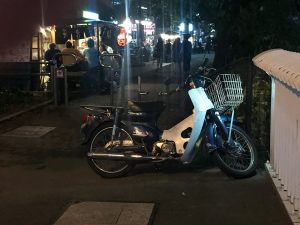
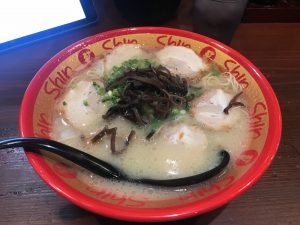

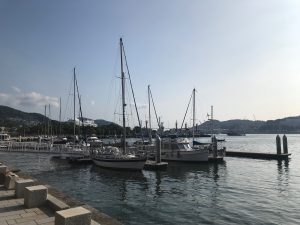
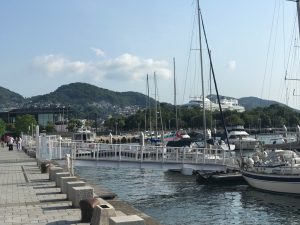
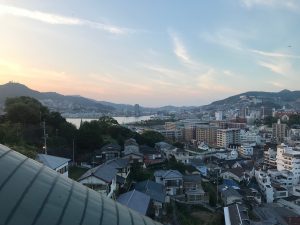
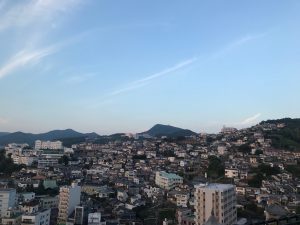


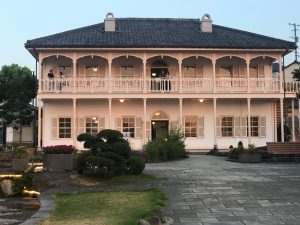
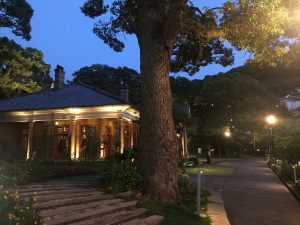
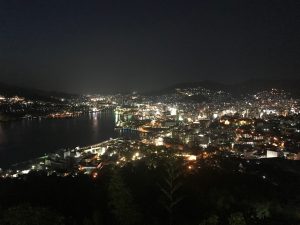


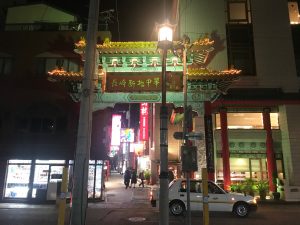
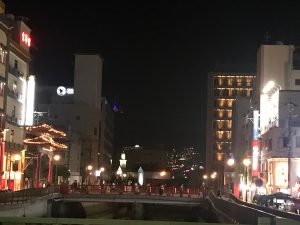


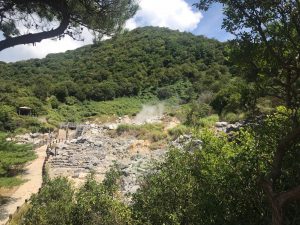

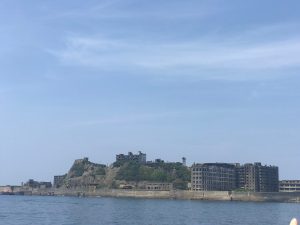
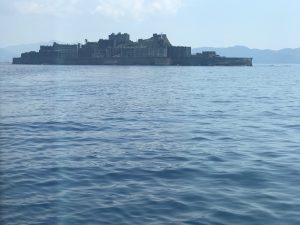

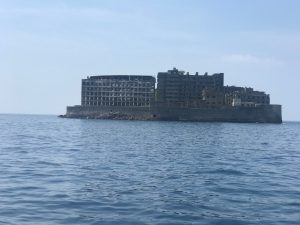

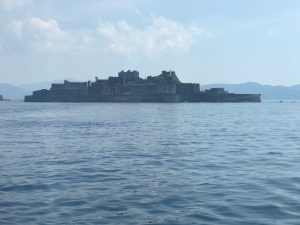

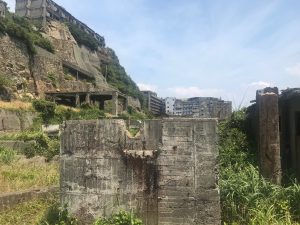


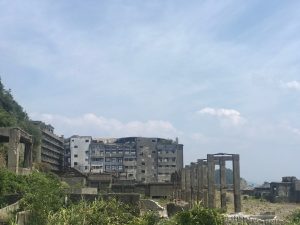

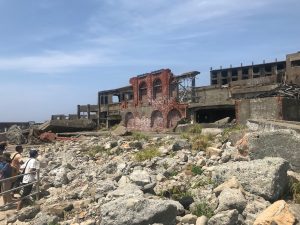
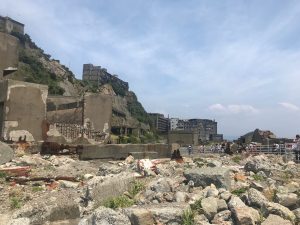

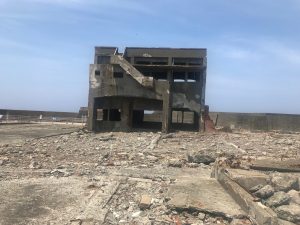

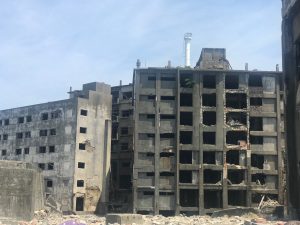

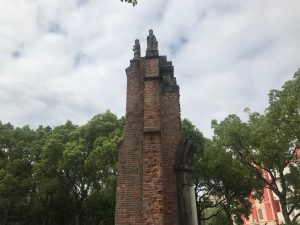
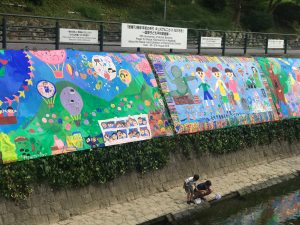
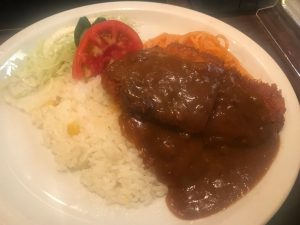

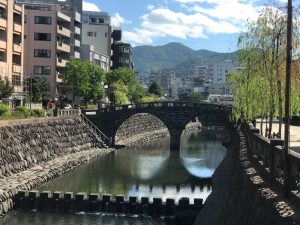

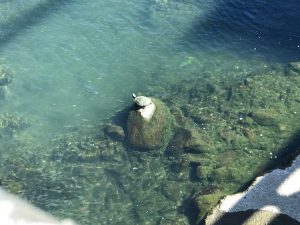
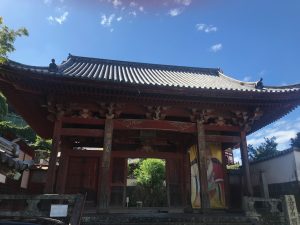
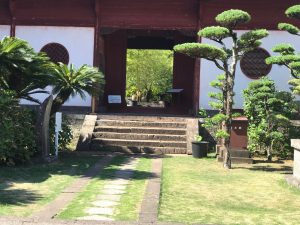
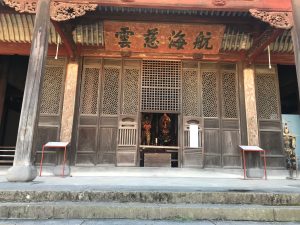
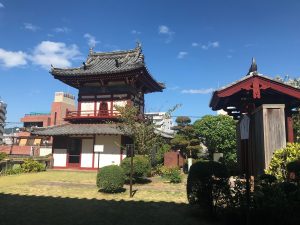
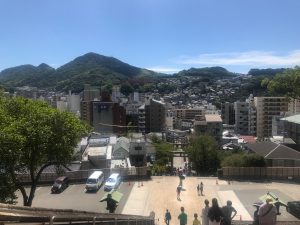

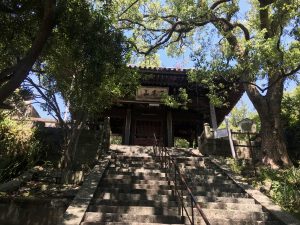
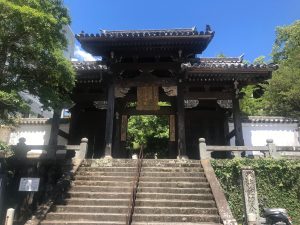
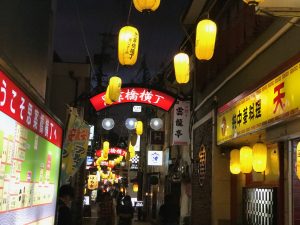
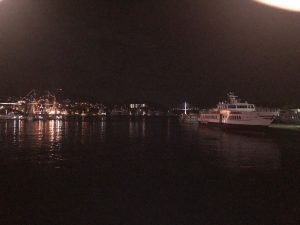
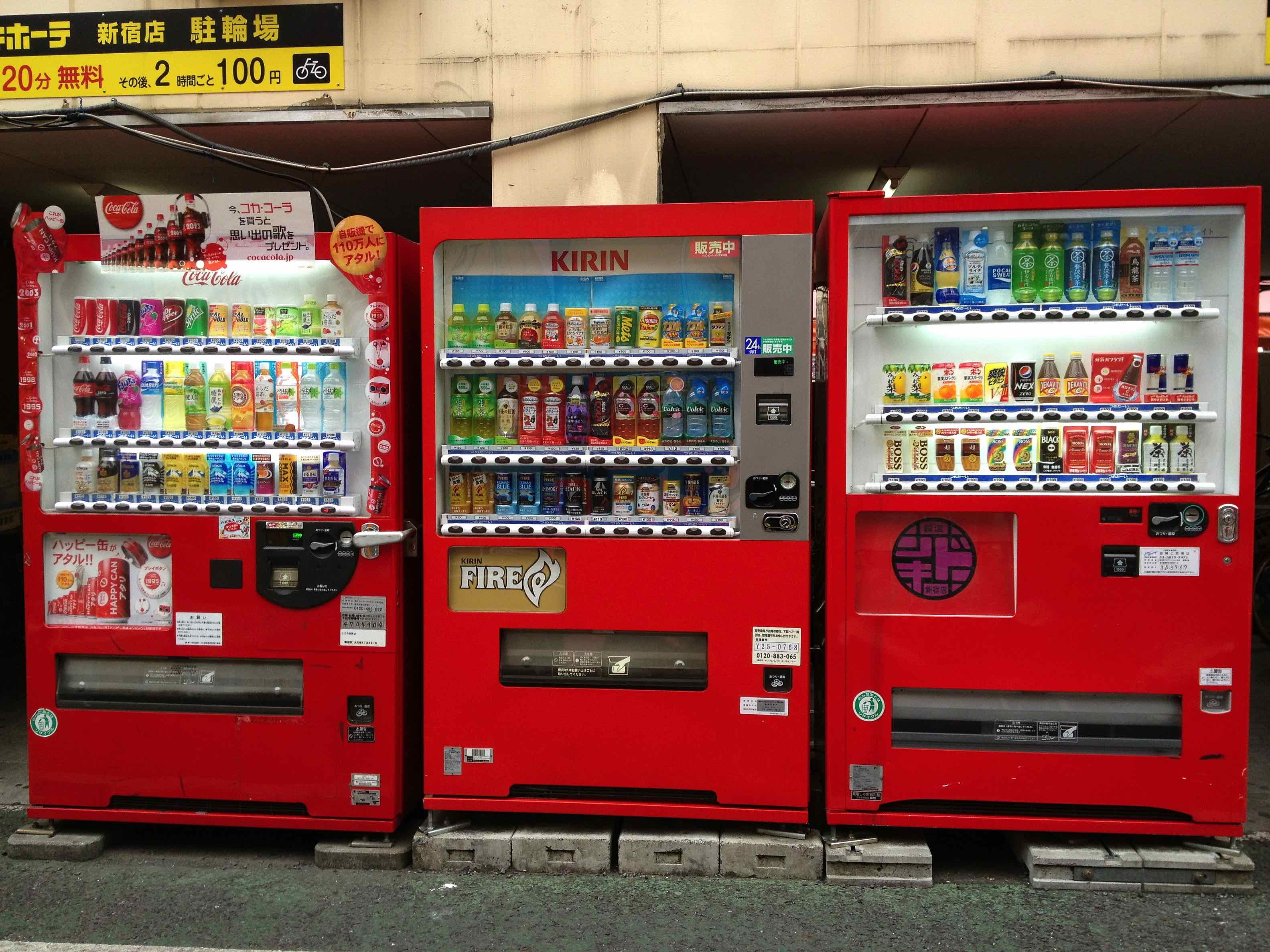
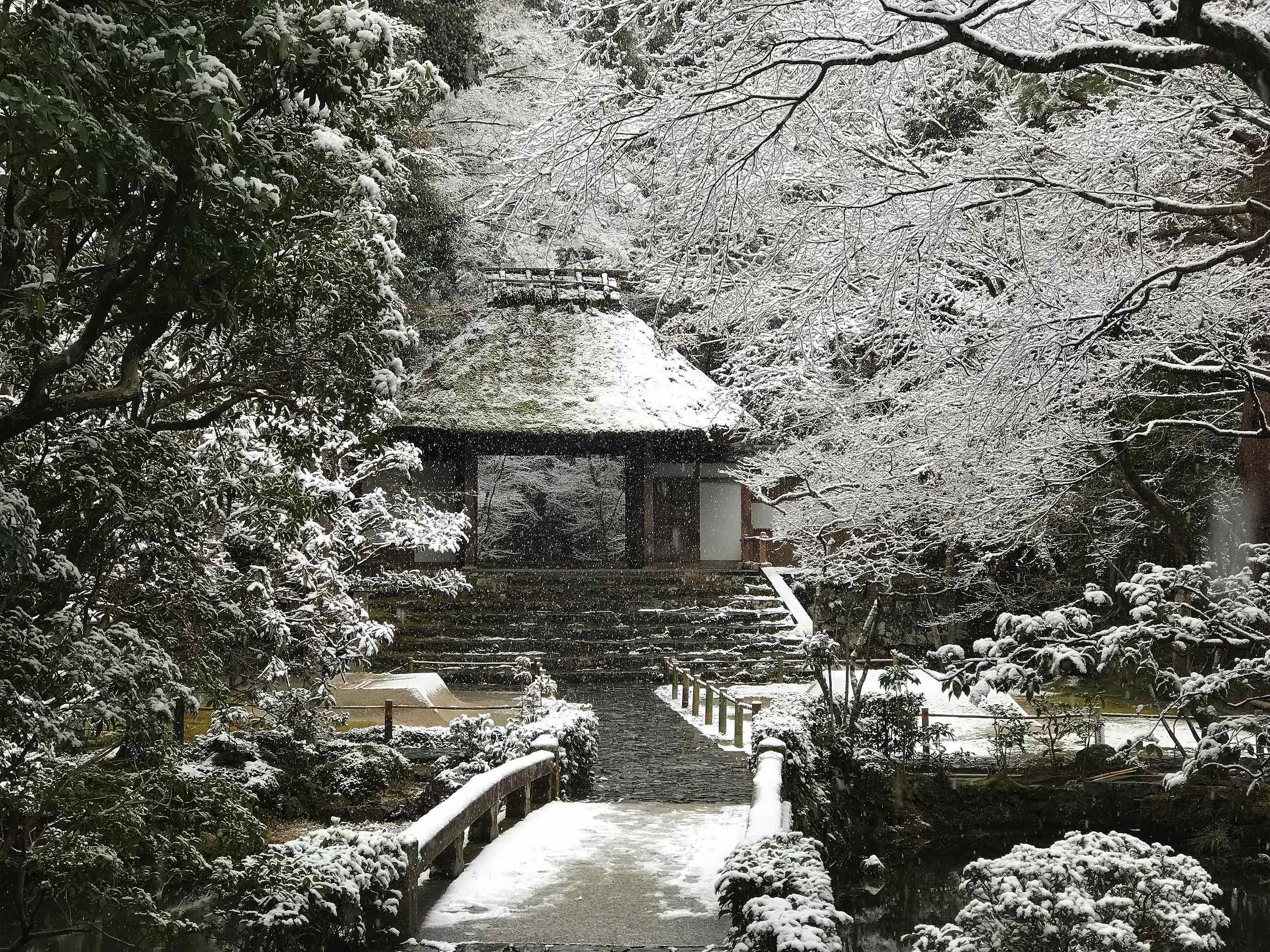
Lost Link
August 24, 2018 at 8:25 pmThat’s cool that you went to Battleship Island! I’ve always wanted to make a NieR type cosplay video there. Does it look like that’d be impossible on one of those tours? Does everyone have to stay together and keep behind boundaries? How close can you actually get to the apartments?
Guardian Enzo
August 24, 2018 at 10:03 pmImpossible. No chance to go off on your own at all. A very controlled environment!
KayDat
August 25, 2018 at 4:09 amNagasaki is undoubtedly one of my favourite cities. The first time I visited, there was a lady at the park next to the 26 Martyrs who was absolutely surrounded by cats. It looked like it was feeding time, if I had to guess this was a regular occurance.
Guardian Enzo
August 25, 2018 at 4:17 amYeah, I saw people who would randomly get surrounded by cats and correctly assumed they were the local feeders, as the food soon made an appearance. Even in Japan (which is kind of cat-crazy generally) Nagasaki seems to be known as a cat heaven.
Ronbb
August 26, 2018 at 8:11 amA new adventure, Enzo, an adventure outside of Honshu…very happy for you.
I’m amazed. Japan isn’t a big country, but there is so much to see and to learn about. Every corner comes with such a rich history…so much to experience indeed.
How did you like the Hakata ramen? How did it feel like to stand in the ruins of the coal mine? How different was the local dialect? How did the atomic bomb and the history impact what the local people feel and think? Sorry — so many questions came to my mind…I got so curious and excited.
Funnily, somehow Angolmois came to mind when I was reading your post. Not that there was anything to do with the show, but perhaps Kyushu was the closest to aid the people in the Tsushima Island…… Oh well, I probably watch too much anime…lol.
Guardian Enzo
August 26, 2018 at 3:01 pmNo, Kyuushu was definitely on the vanguard of the Mongol invasion era.
Hakata style was once my #1, though others have passed it for me in recent years (maybe because of its ubiquity in the States). This bowl was excellent though. The mine was a blast, though it sure would have been fun (though very un-Japanese) to actually explore a little. Nagasaki and Fukuoka both have a dialect, but it’s not as singular as Osaka-ben and harder for my ears to detect.
The A-bomb question is a tough one. That’s not the only tragedy in Nagsaki history (though certainly the biggest) but they seem to have taken a quietly stoic approach to recovering from it, trying to turn the city into a symbol for peace (though less overtly than Hiroshima).
Ronbb
August 26, 2018 at 4:45 pmThanks Enzo. I guess that’s another admiration there…to recover from the pain and forge forward for the better… I’ve never tried a Hakata style. In fact, I doubt if I can find a real one in my city… It’s totally on my list to savour (drooling).